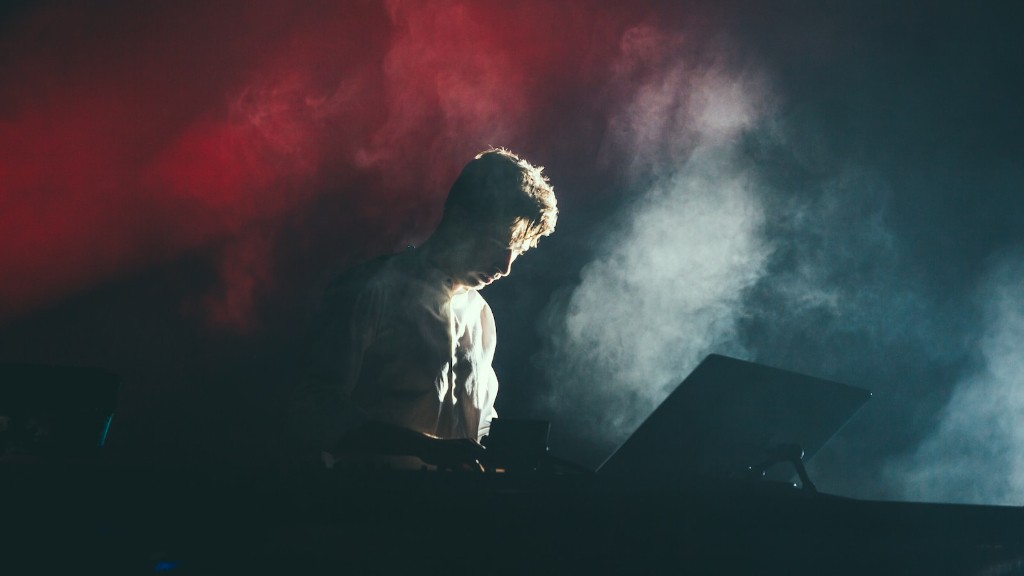Wrestling is an amazing art form that involves intricate physical moves, precise maneuvers, and jaw-dropping moments of drama. Mastering how to draw wrestlers requires not only skill and talent, but also a willingness to learn and practice. It’s a challenging feat, but one that can be achieved with the right techniques.
1. Visualize the Wrestlers
Visualizing your wrestlers before you start sketching is the foundation of good art. It is the best way to get a better understanding of the wrestlers’ anatomy, how they move and how they look. To help you imagine how they look before you draw, you can watch videos of wrestling matches. This will give you an idea of the poses, expressions and gestures that wrestlers make during the fight.
Remember to capture the emotions and intensity of the match in your drawing. Put yourself in the shoes of the wrestlers—make sure to not just focus on the physical details but also the motivations and feelings behind each move. Visualizing what your wrestlers are thinking and feeling before and during the match can create a much more dynamic and powerful drawing.
2. Study Reference Photos
Reference photos are essential for creating realistic and believable wrestlers. Professional wrestlers can often look very different depending on the angle at which they are photographed, so you’ll want to make sure you have a few reference photos to work off of. Be sure to find photographs that best fit the perspective you’re drawing in—an angle from the front, back, or side of the wrestlers—to get the most realistic look.
When studying the reference photos, take a close look and note down the details: the angle of their eyes, the wrinkles on their forehead and the shape of their nose. These details may be subtle, but they are incredibly important for capturing the wrestlers in a realistic and believable way.
3. Practice Drawing
Once you’ve visualized the wrestlers and studied the reference photos, it’s time to start drawing. Sketch out the basic outlines of each wrestler’s body, starting with the head, torso, and limbs. Then, pay attention to the individual body parts: the arms, legs, chest, and back. This will help you gain an understanding of how their body moves and the shape of the muscles. Keep practicing, as practice makes perfect in drawing wrestlers.
Don’t be afraid to make mistakes—they are part of the learning process. To help you improve and refine your technique, find a drawing mentor who can provide you with tips, advice, and feedback.
4. Add Colour and Texture
Colour and texture can make a huge difference when drawing wrestlers. Adding colour will bring your drawings to life, as it can enhance the drama and intensity of the match. Start with darker colours and then blend in lighter shades to create contrast and texture. Experiment with different techniques to create a range of effects—from blurred outlines and muted colours to vivid hues. Remember that you can be as creative as you want when it comes to colour and texture.
A good tip is to use reference photos to get an idea of the colours of the wrestlers’ clothing, skin and hair. This will give your drawings more realism, as well as make them more visually interesting and unique.
5. Learn From Other Artists
Finally, don’t be afraid to look at other artists’ work for inspiration. Look for drawings that really stand out and draw from them. Take note of what techniques, colours and styles other artists are using for their drawings and apply them to your own. This is a great way to keep improving your drawing skills and to create truly unique works of art.
Drawing wrestlers is an incredibly rewarding experience and one that can take years of practice to perfect. But with the right tips, dedication, and the passion to create, you’ll be on your way to becoming a pro soon enough.
6. Emphasize Movement
Wrestling is all about movement so when you draw wrestlers your artwork should emphasize that. When sketching your wrestlers focus on the subtle movements like fluid arm gestures and movement of their body as they go through various maneuvers during the match. Keep an eye on their poses and expressions as they grapple for dominance inside the ring. The key to drawing wrestlers is capturing each movement in a graceful, natural way.
Don’t forget to pay attention to the wrestlers’ facial expressions as well. It will add an extra layer of drama and impact to your drawing. Expressions such as intensity, anger and excitement will give the entire canvas a heightened sense of tension.
What’s more, focus on the details. Adding details such as clothing, logos and jewelry can make your drawing look more polished and professional. By doing so, it will capture the audience’s attention, and make them feel as if they’re right inside the match.
7. Experiment with Style and Tone
To create captivating artwork, think outside the box and experiment with different styles and tones. Try sharp, angular lines or soft curves when creating the outlines of your wrestlers. Going for a more minimalist style will also give your artwork an extra dynamic feel. Also, incorporating shadings in your artwork can help give the wrestlers’ form a three-dimensional look.
In addition, feel free to express yourself with your artwork. Get to know the wrestlers and bring out your personal interpretation of their characters. This can be done through relationships, rivalries or signature poses. These elements give your artwork depth, context and visual appeal.
Finally, be sure to take the time to refine your drawings. This means cleaning up the lines, and adding minor tweaks to make the artwork more believable. Pay special attention to the small details like their clothing, expressions, and hairstyles. Doing so will give your artwork a more polished and professional look.
8. Dare to be Different
One of the most important tips to keep in mind when drawing wrestlers is to be different. Don’t be afraid to stand out and experiment with various techniques and styles—this will help you create artwork that is unique, captivating and eye-catching. Take inspiration from comic books, movies, or other artists, and apply it to your drawing.
Keep in mind that there are no rules when it comes to creating art—the possibilities are truly endless. Think outside the box, don’t be afraid to make mistakes, and most importantly, have fun with it!

